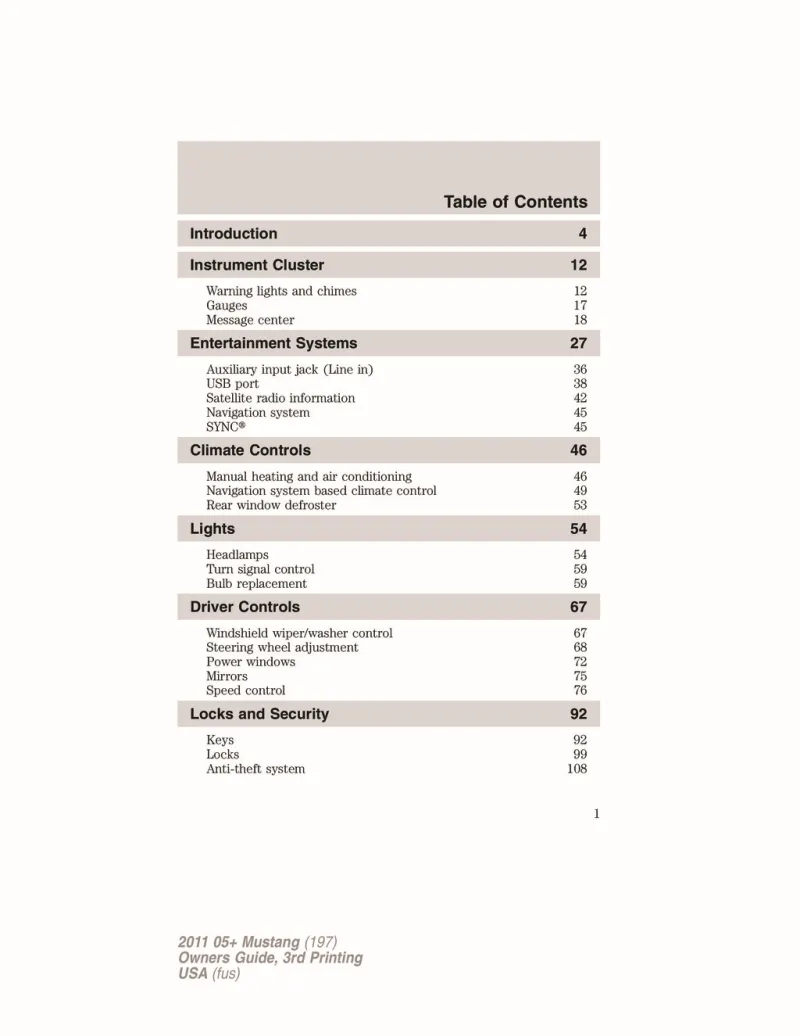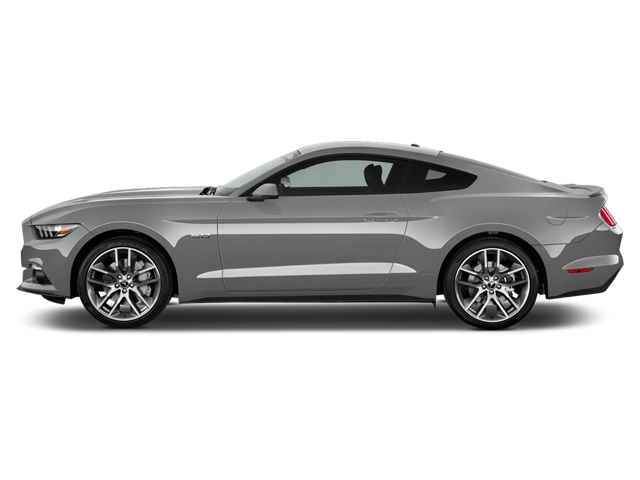2011 Ford Mustang Owner's Manual

Table of Contents
2011 Ford Mustang Overview
Introduction
The 2011 Ford Mustang epitomizes the blend of classic American muscle with modern technology, making it an iconic choice for car enthusiasts and casual drivers alike. With its aggressive stance and retro styling, the Mustang appeals to a wide range of drivers looking for performance, style, and a bit of nostalgia on the open road.
Powertrains
The 2011 Mustang offers diverse powertrain options that cater to both performance-seekers and everyday drivers. The base model features a robust 3.7-liter V6 engine that delivers a remarkable 305 horsepower, offering an exhilarating ride while maintaining efficiency. For those craving more horsepower, the GT trim comes equipped with a powerful 5.0-liter V8, boasting 412 horsepower that launches the vehicle with authority. Both engines are paired with either a six-speed manual or six-speed automatic transmission, providing seamless shifts and driving engagement.
Trims
Ford offers the 2011 Mustang in several trim levels - V6, GT, and various special editions like the GT500. Each trim is designed to offer something unique. The base V6 strikes a balance between performance and affordability, while the GT ups the ante with enhanced features, styling, and power. For those looking for limited-edition exclusivity, the GT500 represents the pinnacle of Mustang performance with its supercharged V8 engine and distinct styling cues.
Features
The 2011 Mustang caters to modern driver's demands with a wealth of features, including Bluetooth connectivity, a premium audio system, and available navigation. Optional upgrades such as leather upholstery, heated seats, and advanced safety features ensure comfort and security during every drive. The retro-inspired interior seamlessly marries nostalgia with advanced technology, making it a pleasurable cabin for both the driver and passengers.
Owner's Manual
The 2011 Ford Mustang comes with a comprehensive owner's manual detailing essential information about vehicle operations, maintenance tips, and troubleshooting guidance. The manual is designed to ensure that owners can maximize their Mustang's performance while safeguarding its longevity, making it an indispensable resource for new and seasoned enthusiasts alike.
User manual download
The Ford Mustang owner manual for the 2011 model year is to be found in PDF downloadable format on this page. The owner manual for the model year 2011 is free and in English, but the repair manuals are usually not easy to get and may cost more.
Manual Questions
Fill the form below and someone will help you!

